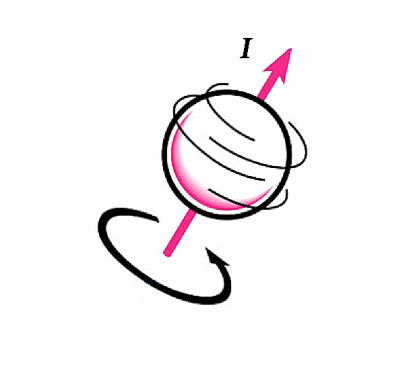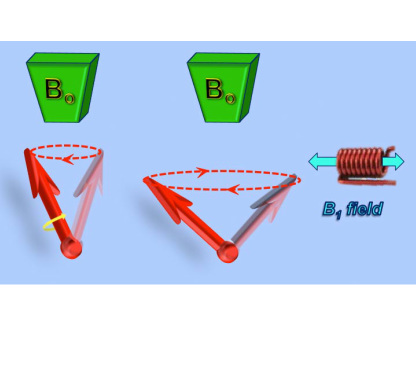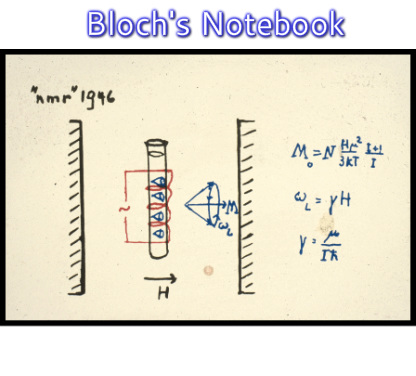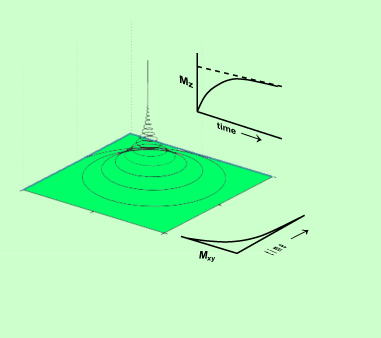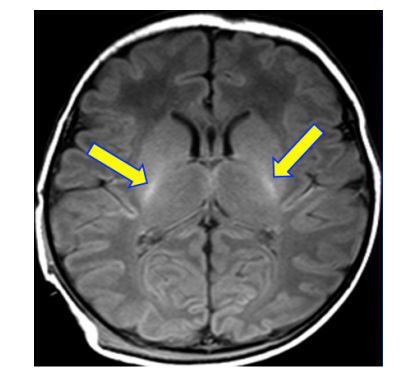The individual topics covered in this section are:
Spin
Precession
Resonance
Relaxation: Physics
Relaxation: Clinical
Spin
Precession
Resonance
Relaxation: Physics
Relaxation: Clinical
In this section we will answer questions concerning the origin and nature of the nuclear magnetic resonance (NMR) phenomenon. Although this material seems difficult, please don't be discouraged by it. Many students get so bogged down trying to visualize what is happening to individual protons at the subatomic level that they often lose sight of the bigger picture. Moreover, this confusion may be so frustrating that the student abandons all attempts to understand other aspects of MR physics. Don't let this happen to you!
Part of the problem is that many textbooks juxtapose and mix two different physical explanations for NMR: (1) the classical model, with tiny bar magnets spinning like tops, subject to the laws of classical physics and electromagnetism, and (2) the quantum mechanical model, with spin states, discrete energy levels, and the like, which are subject to a different set of nonintuitive rules that subatomic particles must obey.
A few subtle aspects of the NMR phenomenon can be explained adequately only by quantum mechanics, and we must either accept these by blind faith or learn enough about them so they are at least "comfortably familiar" to us. For most purposes, however, a detailed background in quantum mechanics is unnecessary for a good functional understanding of MR imaging. You may find it reassuring that only a few scientists doing MR imaging research in academics or industry use (or even remember much about) quantum mechanics in their daily work. Fortunately, the more easily understood classical model provides a solid foundation for describing how the NMR signal is generated and manipulated for imaging purposes. Moreover, in MR imaging we measure not the signal from individual nuclei, but only the averaged signal from billions and billions of nuclei contained within each small volume of tissue. When the averaged behavior of large numbers of nuclei are considered, predictions of the quantum and classical models converge, so our dependence on the classical description of NMR has a theoretical justification.
Part of the problem is that many textbooks juxtapose and mix two different physical explanations for NMR: (1) the classical model, with tiny bar magnets spinning like tops, subject to the laws of classical physics and electromagnetism, and (2) the quantum mechanical model, with spin states, discrete energy levels, and the like, which are subject to a different set of nonintuitive rules that subatomic particles must obey.
A few subtle aspects of the NMR phenomenon can be explained adequately only by quantum mechanics, and we must either accept these by blind faith or learn enough about them so they are at least "comfortably familiar" to us. For most purposes, however, a detailed background in quantum mechanics is unnecessary for a good functional understanding of MR imaging. You may find it reassuring that only a few scientists doing MR imaging research in academics or industry use (or even remember much about) quantum mechanics in their daily work. Fortunately, the more easily understood classical model provides a solid foundation for describing how the NMR signal is generated and manipulated for imaging purposes. Moreover, in MR imaging we measure not the signal from individual nuclei, but only the averaged signal from billions and billions of nuclei contained within each small volume of tissue. When the averaged behavior of large numbers of nuclei are considered, predictions of the quantum and classical models converge, so our dependence on the classical description of NMR has a theoretical justification.
